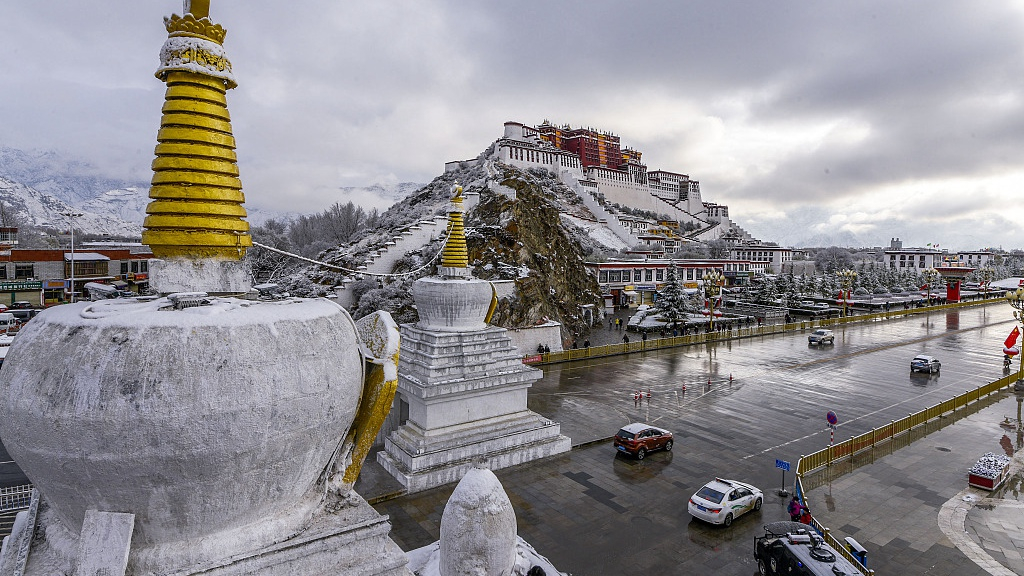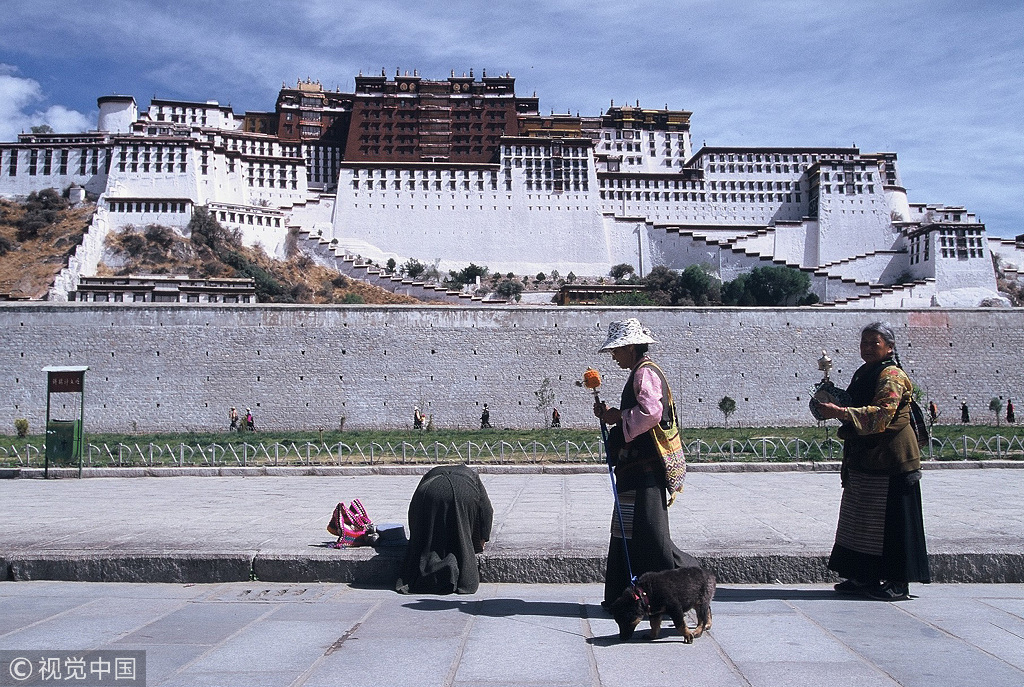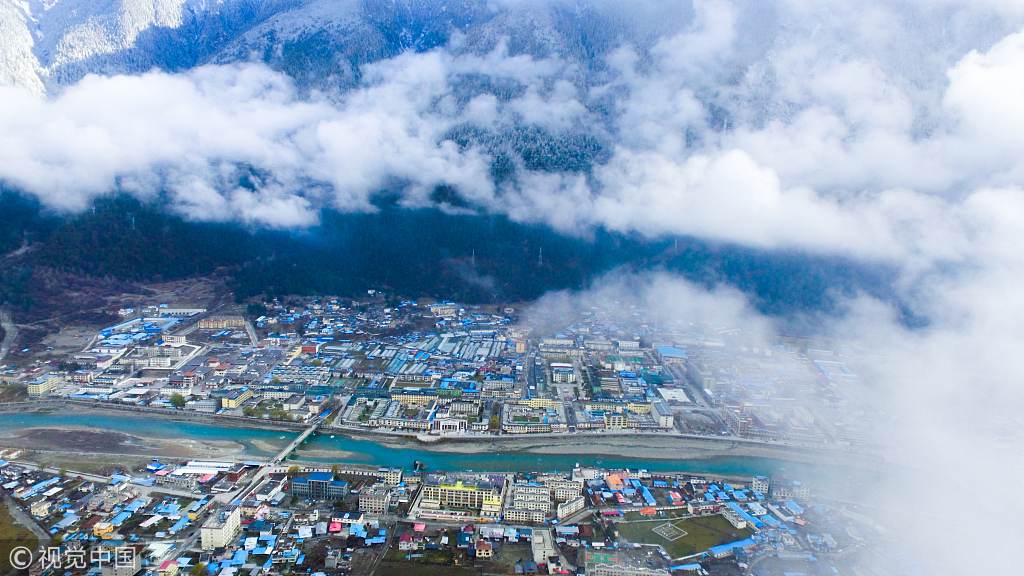
Opinion
11:09, 25-Mar-2019
Why is Tibet a target for Western countries to pick on China?
Xiao Jie

Editor's note: Xiao Jie is an assistant fellow at the China Tibetology Research Center. The article reflects the author's opinions, and not necessarily the views of CGTN.
For more than 60 years now, the "Tibet issue" has crept into the debate between Beijing and Western capitals over the human rights situation in China.
It's puzzling for many observers that the issue of human rights is brought up in this parcel of land, which has been a part of China since the very origin of history and under administrative jurisdiction of China's central government for nearly a thousand years, a legal status not a single country in the world has challenged.
It's a complicated issue with multiple causes, which I'll look at in the following paragraphs from five different points of view.
First, from a realistic perspective, the West's strategy of containing or deterring China's peaceful rise is definitely fundamental in playing the "Tibet card."
As early as the 1950s, the U.S. began to secretly support pro-independence guerrilla movement in Tibet and Tibetan areas of the southwestern province of Sichuan in line with its "NSC-5412" plan, which is part of a grand chess game to hold China back.

The Potala Palace in located in Lhasa, Tibet Autonomous Region, China. /VCG Photo.
The Potala Palace in located in Lhasa, Tibet Autonomous Region, China. /VCG Photo.
Since the 1980s, especially after the Cold War, peace and development became the main theme of the era, and violence – including a covert war – was no longer a feasible option in relations between great powers.
Under such circumstances, Western countries chose to weaponize "human rights" to undermine the international image and soft power of non-ally emerging countries by mobilizing international pressure or even inciting instability domestically. The "Tibet issue" was no more than a geopolitical tool to disrupt China's national security and obstruct its efforts to create a friendly international environment for its economic development.
Under Donald Trump's presidency, the U.S. has started to re-industrialize its whole economic system with the aim of surpassing China in economic competition. For this purpose, to worsen China's economic capability through undermining its national security and international soft power is a good choice for the U.S. – the "Tibet card" is a useful weapon Washington would never abandon.
Second, from an ideological perspective, the "Tibet issue" meets the needs of Western groups with different political ideologies.
Conservatives make up the first group. Within the current political conservatism in Western countries, anti-communism is a shared value. As one of the five Socialist countries in the world and a leading emerging economy, China challenges not only the power structure of the world, but also the ideological structure dominated by the West. Therefore, anti-communism equates to anti-China for most Western conservatives and the "Tibet issue" is part and parcel of their campaign since exiled armed Tibetan rebels were considered as anti-communist fighters in the 1950s and 1960s.
Liberals constitute the second group. Western liberalism emphasizes cultural pluralism, rights of ethnic minorities, religious freedom and even ecological protection. Since the late 1980s when the Dalai Lama delivered his "Five-Point Peace Plan" speech at Capitol Hill, the Dalai clique has been working hard at depicting the "Tibet issue" as a topic related to the cultural, linguistic, religious and economic equal access rights for Tibetan people, as well as the environmental protection efforts on the Tibet plateau, hence attracting the attention and sympathy of Western liberals.

Nyingchi, also known as Linzhi, is a prefecture-level city in southeast of the Tibet Autonomous Region. /VCG Photo.
Nyingchi, also known as Linzhi, is a prefecture-level city in southeast of the Tibet Autonomous Region. /VCG Photo.
The third group might be called the Utopianists. In 1930s, "The Lost Horizon" by James Hilton described a journey to Shangri-La – Tibet as a prototype for this magical, mystical and mysterious place emerged. The novel was adapted into a movie, bringing forward a romanticized Western view of Tibet. This vision was turned more vivid in the 1960s with the migration of Tibetan Buddhism to the West and its depiction in Hollywood movies in the 1990s. As a result, advocates of so-called "Tibet independence" gained tremendous support from sympathizers in the West.
Third, from a lobbyist perspective, the "Tibet issue" is the result of lobbying efforts by Tibet-related interest groups in Western countries, including offices of the Dalai clique and indigenous Tibet-supporting groups. Their lobbying activities cannot change the official stance of Western countries regarding Tibet as part of China, but can keep the buzz around the "Tibet issue" going.
Fourth, from a domestic political perspective, the "Tibet issue" is a moral tool used by both legislative and executive bodies in Western countries. Within the system of checks and balances of Western countries, legislative, executive and judicial branches share constitutional power, exercise their own duties, and deter the expansion of other branches. But in political reality, when electoral and party politics are involved, the legislative and executive branches both seek more authority of their own, and override the other by attracting more populist support.

The Nyingchi-Lhasa highway in Nyingchi, a prefecture-level city in southeast of the Tibet Autonomous Region. /VCG Photo.
The Nyingchi-Lhasa highway in Nyingchi, a prefecture-level city in southeast of the Tibet Autonomous Region. /VCG Photo.
Within this context, the "Tibet issue," usually framed as a human rights and moral issue in Western societies, could be adopted by politicians to attack their political opponents by describing them as indifferent to ethnic minorities without the risk of offending the mainstream society.
For example, members of the U.S. Congress raise Tibet-related bills as a way to criticize the president or other high officials for ignoring the "Tibet issue" when the latter seek to improve ties with China, in order to claim the moral high ground and increase their political reputation.
Fifth, from an individual perspective, the "Tibet issue" has been promoted by Western political figures with a "Tibet complex" for generations. In the past 60 years or so, political figures of various generations in the West have been involved in promoting the "Tibet issue" with some doing it out of personal interest.
For example, Budapest-born Thomas Lantos, an early supporter of the Dalai clique in the U.S. congress who provided a platform for the Dalai Lama to make his speech in 1987, started to pay attention to Tibet during his trip to Nepal in the 1970s. The miserable lives of exiled Tibetans reminded him of his early life at a forced labor camp by the Nazis. He went on to provide support to the Dalai clique after mistakenly equating the similarities between his personal experience and that of Tibetans living in exile.
In conclusion, these five perspectives that different constituents of Western society hold towards the "Tibet issue" contribute to its propagation and survival over the years, making it one of the most complicated issues in international politics.
(If you want to contribute and have specific expertise, please contact us at opinions@cgtn.com.)

SITEMAP
Copyright © 2018 CGTN. Beijing ICP prepared NO.16065310-3
Copyright © 2018 CGTN. Beijing ICP prepared NO.16065310-3